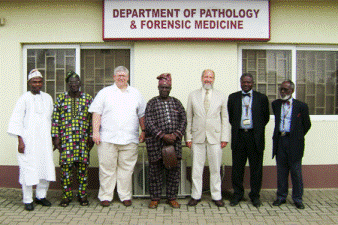Natural Resources, School of

Karl Reinhard Publications
Document Type
Article
Date of this Version
12-2013
Citation
Published in International Journal of Paleopathology 3:4 (December 2013), pp. 257–268; doi: 10.1016/j.ijpp.2013.10.001
Abstract
Archaic mummies from northern Chile were examined for the presence of Pediculus humanus capitis. The excellent preservation of mummies and louse nits/eggs permitted a study of the degree of head lice infestation. We studied 63 Chinchorro mummies (ca. 5000–3000 years B.P.) from the Arica-Camarones coast. An area of 2 cm × 2 cm on each mummy’s head was systematically inspected for louse nits/eggs. Hairs with nits/eggs and lice were collected and analyzed using optic and scanning electronic microscopy. About 79% (50/63) of the mummies resulted positive for pediculosis, with an average of 2.1 nits/ eggs/cm2 per positive individual. Microscopic analyses revealed the micromorphology of all developmental stages, including eggs/nits, nymphal instars and adults. Chinchorro people lived in small huts increasing the transmission of ectoparasites. Considering that head lice thrive in crowded conditions, their prevalence could be used as an bioindicator to assess and debate cultural behavior (e.g., degree of crowdedness and sedentism) and to study paleoepidemiology in prehistoric populations.
Included in
Disorders of Environmental Origin Commons, Environmental Public Health Commons, International Public Health Commons, Medical Pathology Commons, Other Immunology and Infectious Disease Commons, Parasitic Diseases Commons, Parasitology Commons


Comments
Copyright © 2013 Elsevier Inc. Used by permission.